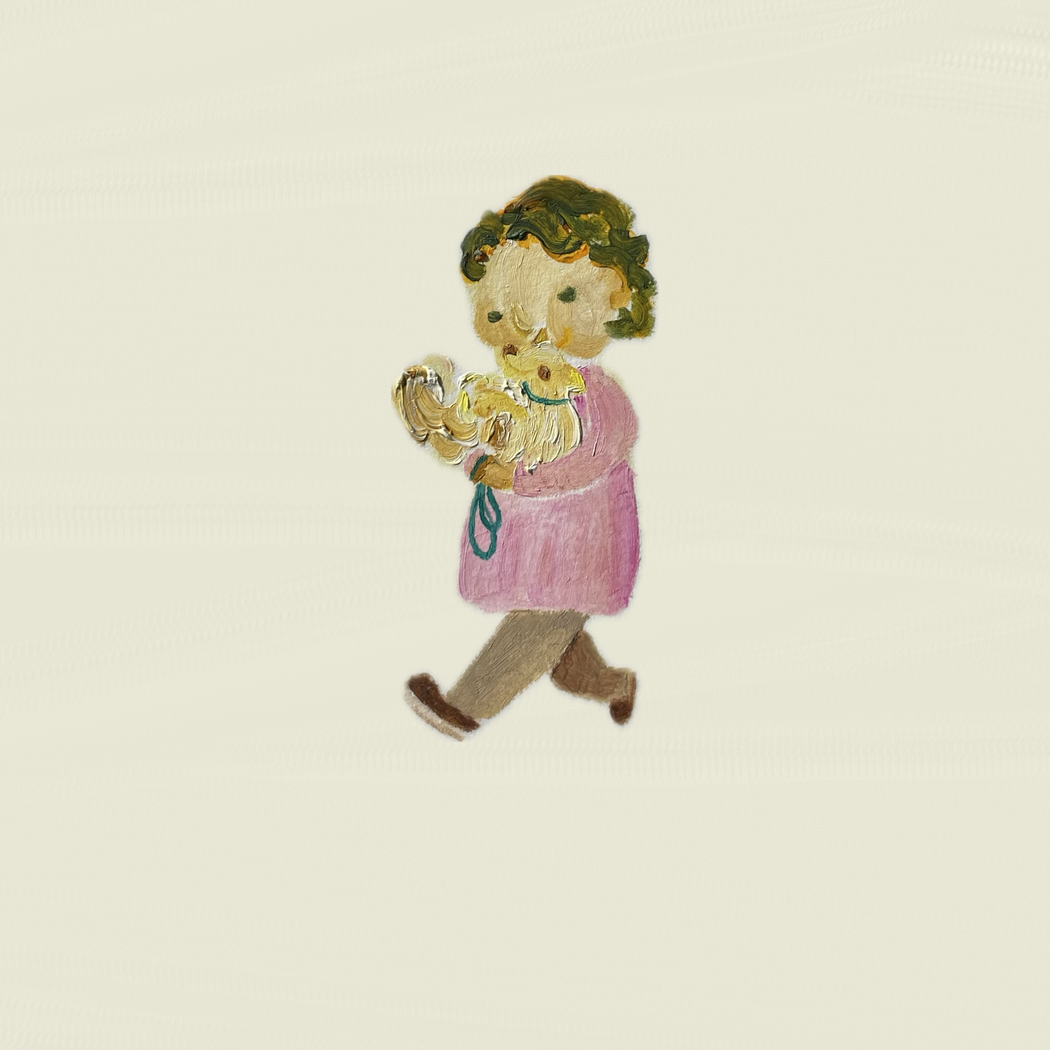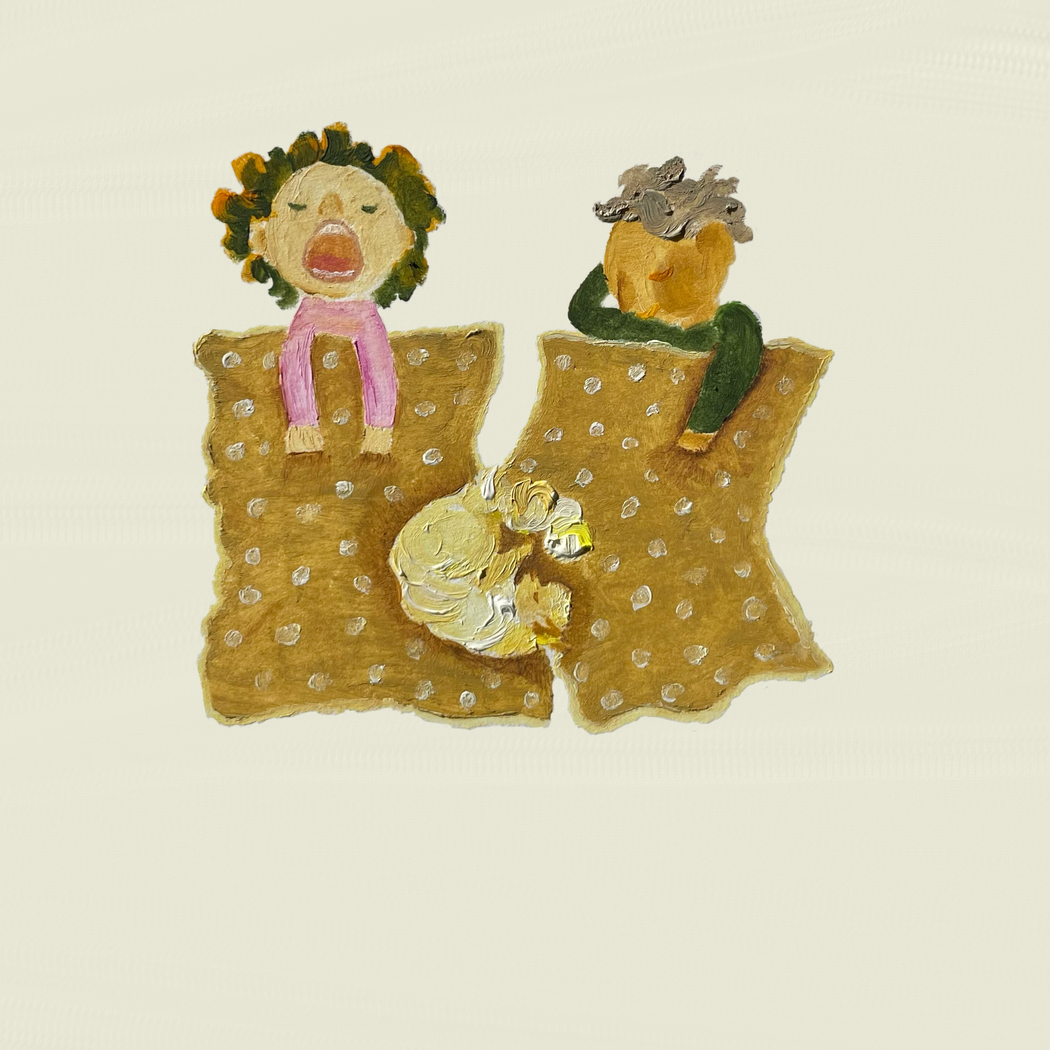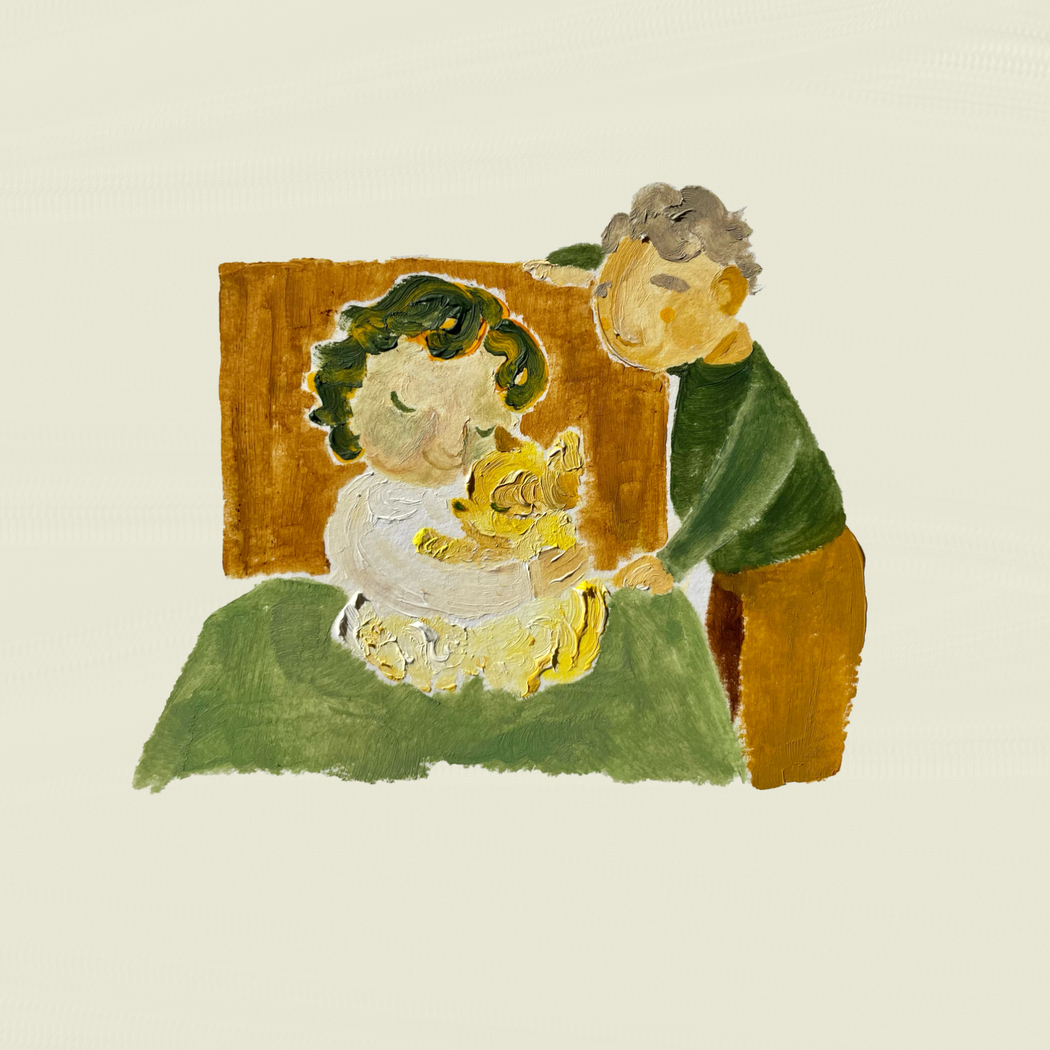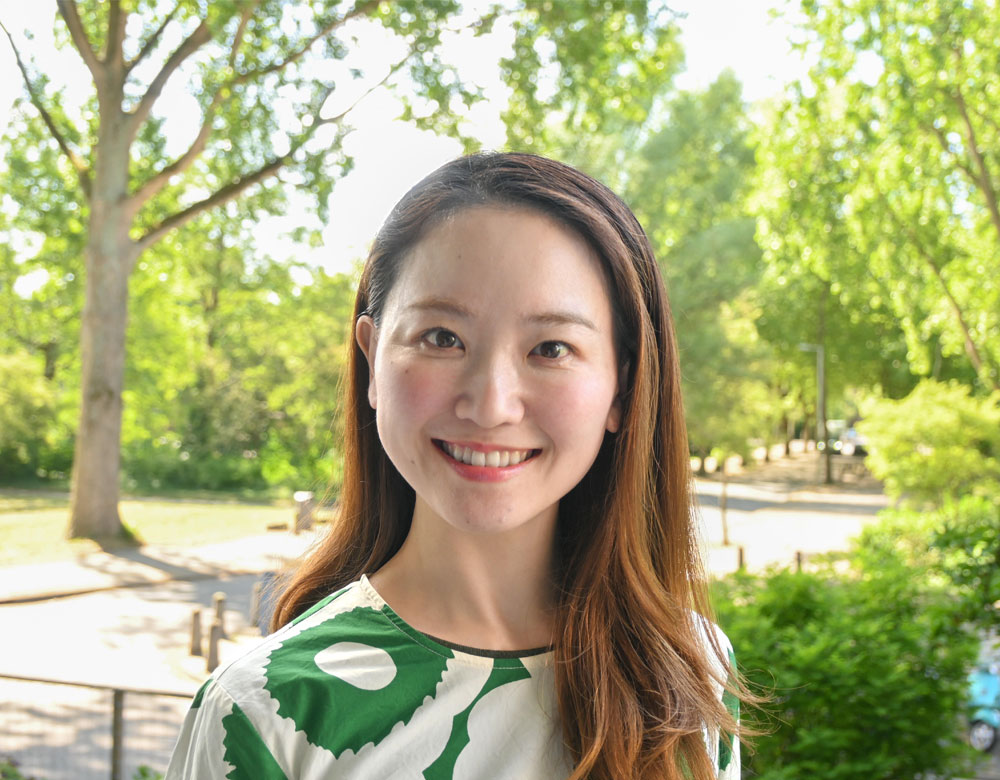Chiho Handa
Year of birth: 1988
Where do you live: Amsterdam
Your education: Master’s Degree in Education, Graduate School of the University of Tokyo
Self-studied Art
Describe your art in three words: Nature, Insight, Children
Your discipline: Oil Painting, Educational Psychology, Planning and Editing Educational Books
How has your background in educational psychology influenced your approach to creating children’s books and illustrations?
My journey as a painter is like seeing the world through a child’s eyes. I observe children through the lens of developmental psychology and notice every corner of their world is made up of small elements. For example, when my son was 18 months old, he adored water. He played with water in various ways—pouring it into a cup, drinking it, tapping the surface strongly or softly, gazing at dripping water. He discovered different textures, sounds, and shapes of water and found them super exciting! For many adults, water is just water, but little ones see a lot of small elements in it. As a psychologist, my art begins with capturing a child’s sense of wonder.
Can you tell us about your transition from working as an educational book editor to becoming a freelance illustrator and picture book creator?
I used to work at a publisher as an editor in Tokyo, but one day, my husband was transferred to Amsterdam, so I decided to move with him. It wasn’t a 100% positive decision, but now I know life is full of unexpected turns that open new doors. When I worked as an educational book editor, I planned new books, presented them in internal meetings, and found external designers, writers, and illustrators to collaborate with. I worked like a producer and director. However, when I moved to Amsterdam, I decided to leave that job and start my career as a freelancer. I realized I was more suited to focusing on “creating,” so I began working as an illustrator. I worked very hard in Tokyo, so when I started freelancing, I felt lonely and anxious. It took a lot of patience to get positive responses as a freelance illustrator. Honestly, I still feel lonely and anxious at times. But at the same time, I have gained the freedom to express myself.
 Chiho Handa | Carry Me On The Way Home | 2025
Chiho Handa | Carry Me On The Way Home | 2025
How did your move from Tokyo to Amsterdam affect your creative process, particularly in the way you depict nature and animals in your works?
Leaving my corporate job gave me a lot of time, which made me feel lonely and introspective. I lost confidence in myself and felt so down that I just read books constantly. When my output wasn’t going well, I decided to do a lot of input. This helped me naturally adopt a mindful way of living. It reminded me of my childhood self. From a young age, I had a special affection for animals and plants. Running around in the greenery and conversing with the small creatures of the forest was my daily routine. When I moved to Amsterdam, I remembered my childhood passion for nature. The lush environment of Amsterdam brought me back to my primitive self. Walks in the forest, seeing squirrels running, and spending time with birds chirping became my daily routine again. My creative passion was stirred, and I couldn’t help but create picture books.
Your picture books seem to have a deeply emotional connection, such as in the work about your beloved dog’s passing. How do you approach difficult emotions in your art, and what do you hope children will take away from your work?
When I create a picture book, I start by writing, especially for books like “Spring Comes Without You,” which is about my beloved dog’s passing. I write down my strong emotions in a notebook, like a poem, even crying a lot if I am very sad. This process calms me and helps me notice deep feelings inside myself. I hope children learn to recognize their own emotions, beyond just “happy” and “sad.” I want them to experience these emotions so they can sympathize with others.
 Chiho Handa | Cozy Nap Time With You | 2025
Chiho Handa | Cozy Nap Time With You | 2025
Could you tell us about your first solo exhibition “I Can’t Help Dancing” and how it felt to showcase your self-produced picture books and original paintings?
I couldn’t imagine holding my solo exhibition until I actually did it. I am so grateful to everyone who gave me the opportunity. I organized my exhibition as a picture book original illustration exhibition. I let visitors freely read my picture books, hung all pages as prints, and framed original illustrations. Not only adults but also many children came to my exhibition, which was exactly what I wanted. I felt so glad to have lots of little readers who encouraged me to create more works. Even people who live far away complimented my works on Instagram and some wanted me to hold another exhibition where they live. All of these experiences cheered me up and motivated me to keep creating my own art.
Your work often captures simple moments in nature. What draws you to these moments, and how do you think they resonate with children and adults alike?
I am usually mindful, and it’s not on purpose—I do this naturally. After moving to Amsterdam, I had a lot of time to become introspective. I spent lots of time thinking and adoring small things. This comes from my academic background in developmental psychology, where I tend to see things in small elements. There is one more reason: I recognize plants, animals, and small creatures as my friends. That’s why I want to know their features, names of species, and notice small differences. Simple moments in nature are so universal that everyone understands them unconsciously. My picture books are now seven, and some people like the book about a sour lemon, while others prefer the book about water. The joys and worries they face at that moment resonate with one of my picture books.
 Chiho Handa | You Became Our Family | 2025
Chiho Handa | You Became Our Family | 2025
How does your experience as a mother influence the stories and messages in the picture books you create for your son and other children?
Becoming a mother has allowed me to write stories because I have a concrete reader—my son—right in front of me. Before that, I tried to write stories but never managed to finish them well. There were so many messages I wanted to convey that they ended up being preachy and complicated. But after giving birth to my son, I tried writing stories as if I was talking to him, and they came together easily. My habit of seeing things in small elements has become even more refined since my baby was born.
I don’t want children to avoid negative emotions or events, and I know they can’t avoid them. Someday, they will face deep hurt. I want to instill the strength to rise up when that time comes. That’s why I create stories with deep messages that they might notice as adults. I hope they read my books again when they grow up. For example, when they become troubled teenagers, they might receive the message. I hope that happens.


Leave a Reply